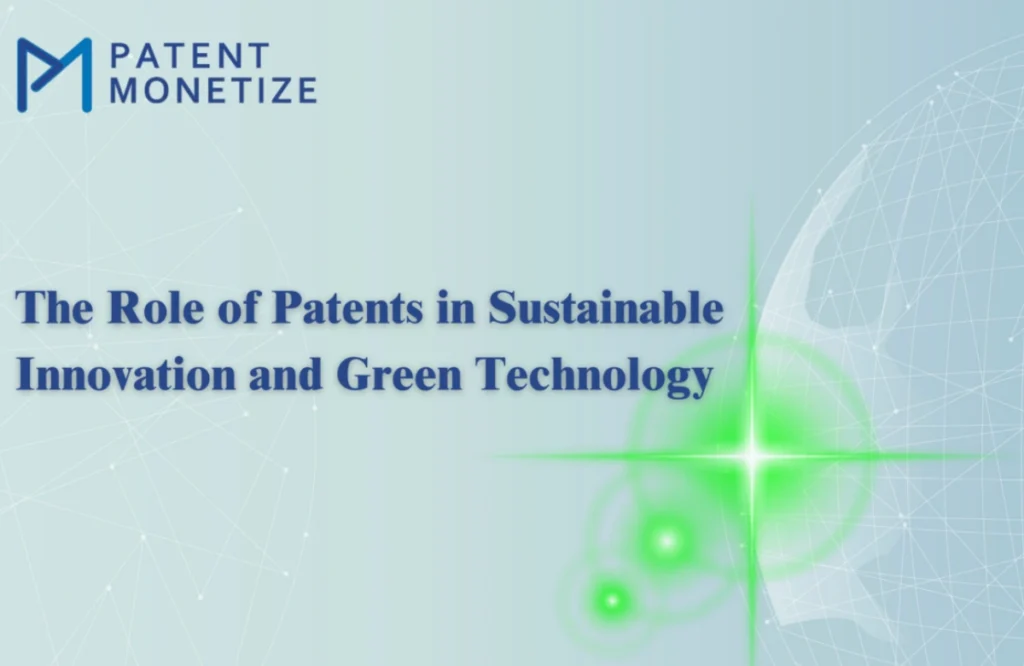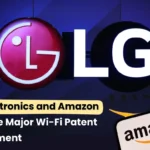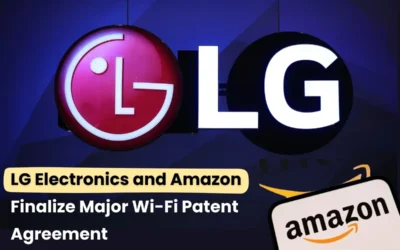
The Role of Patents in Sustainable Innovation and Green Technology. Today, sustainability and green technology have become more than buzzwords as they are crucial elements in the success of responses to global environmental challenges. Lastly, in a world that is seeking greener and more sustainable solutions, green technology innovation becomes an important necessity in increasing this pursuit. Protection and encouragement of intellectual property, particularly patents, becomes a central feature of fostering innovation. Patents significantly ease the incentives on R&D related to sustainable and green technologies for inventions designed and constructed by an inventor is covered with a particular legal right with additional incentives in the form of gaining returns from such innovations. In this scenario, the current paper talks about patents in sustainable innovation, green technology, and its merits/demerits or advantages/merits associated with it, and global pressure in its way to lead to a much more sustainable tomorrow.
Aware of Patents and Green Technology
What is a Patent?
A patent is the legal Patents and their Roles in Green Innovation and Clean Technology right that is granted to the inventor and exclusively gives him the right to use his invention for a stipulated time of usually 20 years. Such a right indicates that no one else can make, use, or sell the invention without being given explicit permission. Patent rights are therefore of great importance because they encourage people to innovate, because they will always have the opportunity to capitalize on their ideas through being rewarded for their creativity and investment. Patents are the backbone of sustainable innovation and green technology. The world demands renewable energy, energy-efficient solutions, and sustainable materials in the face of environmental catastrophes that ought to be changed overnight. Innovators are protected through patents and given incentives to invest in new solutions in the fight against climate change, waste minimization, and resource conservation. Patents provide the inventor with monopoly time and security to perfect the technology and bring it to the market. Such an exclusive right stimulates investment in research and development because when the companies can get a return on their investments, they are more likely to invest in break-through green technologies. In addition, patents encourage the spreading of knowledge. The application for patents is comprehensive descriptions of the inventions. Thus, such knowledge is in the public domain, and other inventors are facilitated to improve upon the technologies existing, therefore making new innovations on green technologies. Another way that patent licensing may ease the spread of green technologies within industries and borders is the fact that it will accelerate the rate at which eco-friendly solutions are adopted in the entire globe.Patents play a very important role in promoting sustainable innovation in the long run. Patents, by safeguarding intellectual property, attracting investment, and ensuring knowledge sharing, pose an important step towards developing such green technologies that would help in mitigating climate change and thus create a greener future.
What is Green Technology and Sustainability?
Green technology refers to any kind of technology or solution engineered to decrease the negative impact on the environment, waste of resources, or the conservation of available resources in other ways towards supporting sustainability. Some of the most traditional types of innovations are renewable energy sources such as solar and wind power, energy-efficient devices, sustainable agriculture practice, green building technologies, solutions for waste management, and eco-friendly manufacturing processes.Sustainable innovation targets at the generation of technologies that would be possible to be an ecologically sustainable and also capable to meet social and economic needs. Through reduction of resource depletion and the eradication of harmful impacts on the ecosystem, the society achieves a much-balanced and sound future through sustainable innovations.
Relation between Patents and Green Innovation
Patents: The Right Tool to Promote Innovations Patents are a very important part of the development of green technologies. They give inventors exclusive rights over their inventions, motivating them to invest time, effort, and resources in new, revolutionary solutions. Without patents, there would be very little incentive for companies or individual inventors to create novel technologies, especially in industries where R&D costs are high and the path to market success is uncertain.
For green innovation: patents are an act of protecting one’s mechanisms. This gives the inventors an opportunity to safeguard the fruits of their labors. Patent protection prevents people from copying such inventions, therefore, helping the innovators cover their development costs and gain an advantage over others.
Investment and Funding
Generally, green technologies call for direct investment in terms of research and testing and sometimes in scaling the inventions. Investors are generally averse to investing in innovations unless they are protected against copycatting competitors. Patents provide protection; thus, green technology is more appealing to venture capitalists, private equity firms, and other investors. A patent or a company holding a patent on green technology increases the credibility of the inventor in the eyes of potential funders so that it gets to reveal novelty and uniqueness to the potential backers.
Building Knowledge Networks
The patent gives exclusivity, but also encourages knowledge sharing. To be granted a patent, the inventor must publicly disclose the details of his invention. This creates a public record for others in the field to learn from, contributing to the general body of knowledge in green technology. Such openness can lead to further improvements and refinements of the technology, creating a positive feedback loop of innovation.
Moreover, patents invite cooperation. When the firms or the actual inventors file patents over their green inventions, they set up bases for collaborative ventures and associations, and thus the technologies diffuse and lead to even greener results. Thus, this co-operation among the different parties may make the green technologies gain their market application sooner.
Market Entry and Competition.
Even though patents provide protection to the innovators, they also give rise to healthy competition. After a creator patents the green technology, others can invent other improvements or after-sales that will complement the original one. This results in a competitive market situation where companies are pressurized to create even more efficiency and cost-effectiveness in their products. Through patents, innovation is protected, yet the competition between firms results in some breakthroughs and improvements in green technology.
Challenges Facing Patents in Green Technology
Although patents act as one of the measures to promote invention, there is a challenge surrounding their application in the green technology sector. Among them are the following:
Patenting costs are highly expensive.
Patent applications are very costly and time-consuming, and much more so in green technology. Innovations here tend to be extremely complex and hence require detailed scientific explanations, thereby discouraging small inventors, startups, or businesses in developing countries. Most future green technologies may become nonpatentable due to costs involved in the filing, maintenance, and enforcement of patents.
Patent Thickets and Blocking Innovation
In some industries, patent thickets—the plethora of overlapping patents formed like a network—stifles innovation. This is particularly perplexing in the green technology sector, where multiple inventors may file patents for similar technologies. In that case, when one party owns a patent, the other may own another connected patent, so it is the innovators who have to bargain for licensing agreements with a number of parties-cost of a transaction and delay in bringing new technologies. Patent thickets rather slow down the pace of green innovation rather than increasing its tempo.
Patent Hoarding and Inefficiency
Some patent-holding companies engage in patent hoarding: they file patents on a wide-ranging basket of technologies but do not seek to develop them commercially. They hold onto the patents as a vehicle for collecting licensing fees from other firms. This will strangle green technologies because others are prevented from employing critical innovations and also because licensing is bound to become cumbersome with roadblocks.
Emerging Markets with Limited Access
In the emerging markets, patents provide scarce access. Emerging market firms find it rather expensive to patent their technologies; thus, it will not be an easy task for them to adopt and take up sustainable solutions. This will also align with the emergent demand for greener intellectual property systems that may harmonize patent protection toward more access to green technologies for those regions that possess the most vulnerable fragility of climate change and environmental degradation.
International Patent Programs for Green Technology
Some of the international programs undertaken in hope to increase cooperation and easy access to green technologies with regard to some of the challenges above.
Patent Cooperation Treaty (PCT)
The PCT is an international multilateral treaty, which permits simplification in the filing of patents in many countries. Under the system of PCT, a given inventor can submit one application for a patent that will be examined and validated by the member countries. Therefore, it means that the holders of invention have protection of their green technology in many jurisdictions without going through the whole process of any given country, saving on time and cost.
The Green Patent Database
WIPO has launched the Green Patent Database to enhance the accessability of the green technologies. It avails the opportunity for patent holders to include their green patents in the list published by WIPO on the database, thereby hastening the diffusion of those green technologies. This is in pursuit of increasing global access to green technologies, especially among the developing nations.
The Access to Medicine and Green Technologies Programs
Others work towards setting up frameworks that make green technology cheaper to access in developed countries. This will mean a softer licensing deal on green technology, and therefore ease sustainability for developing nations.
Conclusion
Patents form part of the parcel for making innovation on green technology sustainable. Patents not only provide protection to inventors but also attract investors, facilitate knowledge sharing, and healthy competition. However, large challenges include very high costs associated with patenting, patent thickets, and limited access in developing countries. Global initiatives such as PCT and the Green Patent Database are helpful to mitigate these challenges and encourage extensive diffusion of sustainable technologies.Finally, patents in green innovation will ensure that the protection of intellectual property does not outshine the widespread availability of such technologies. Therefore, patents are a power that governments, businesses, and innovators can utilize in order to navigate the global transition toward a more sustainable and environmentally responsible future.









